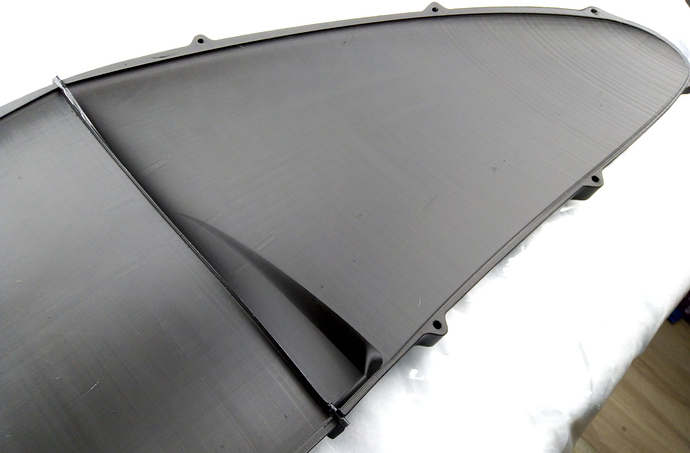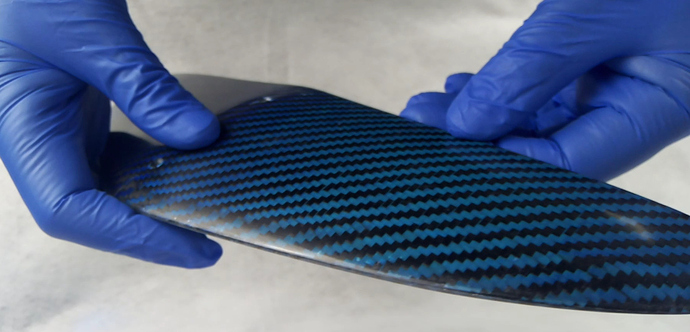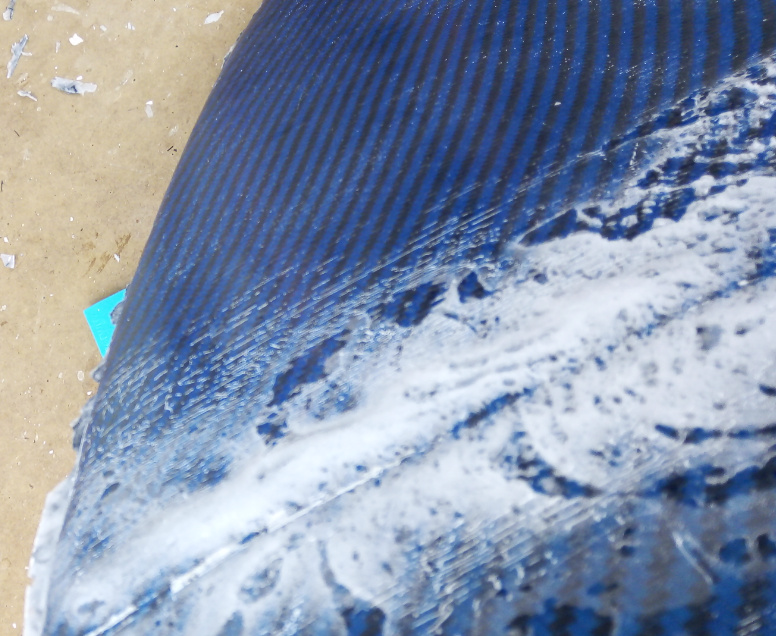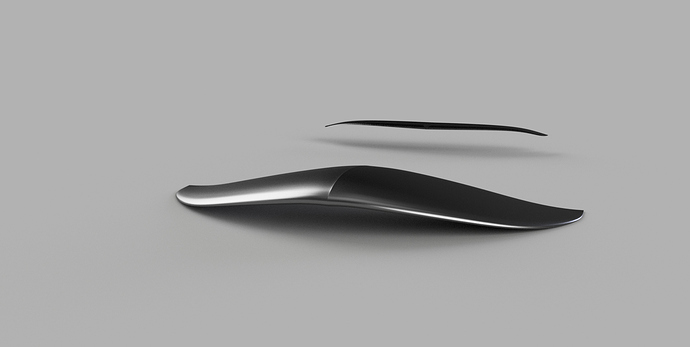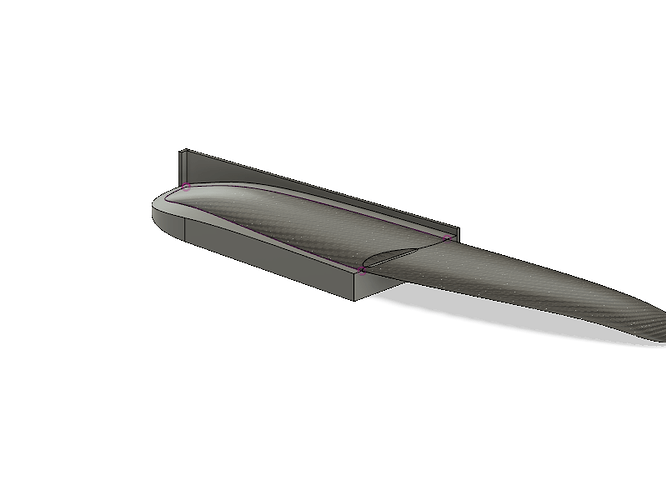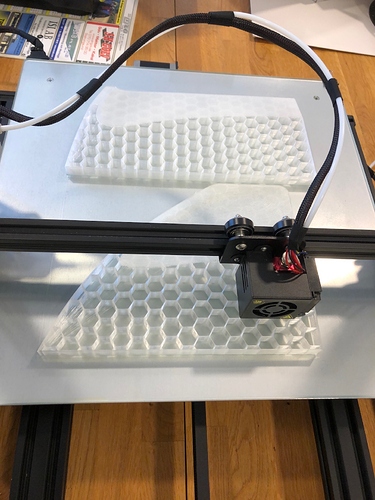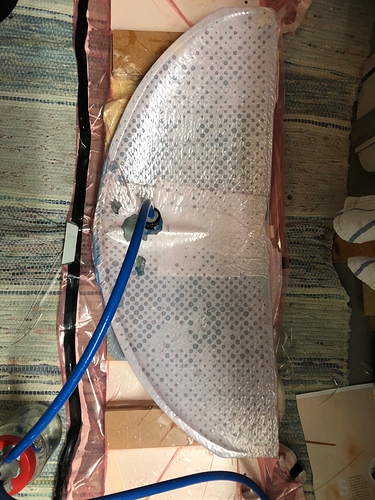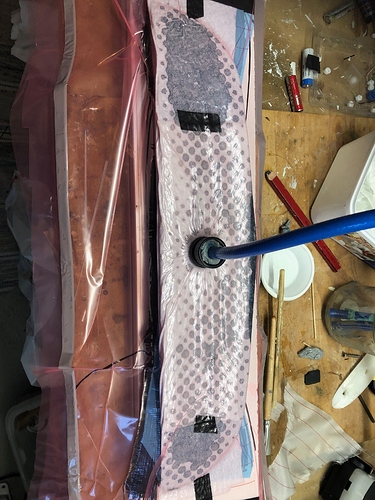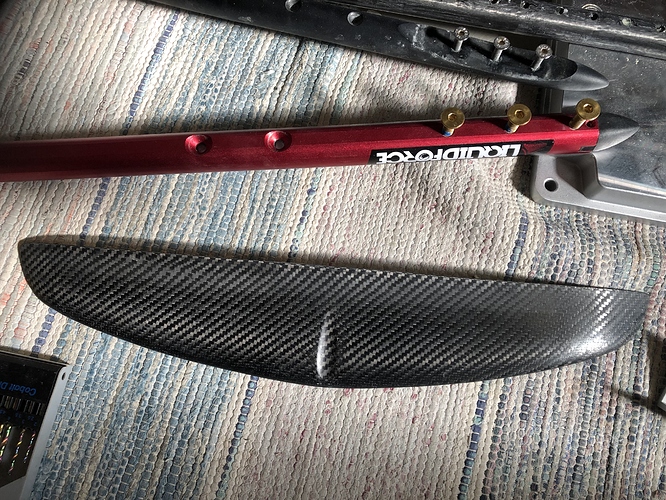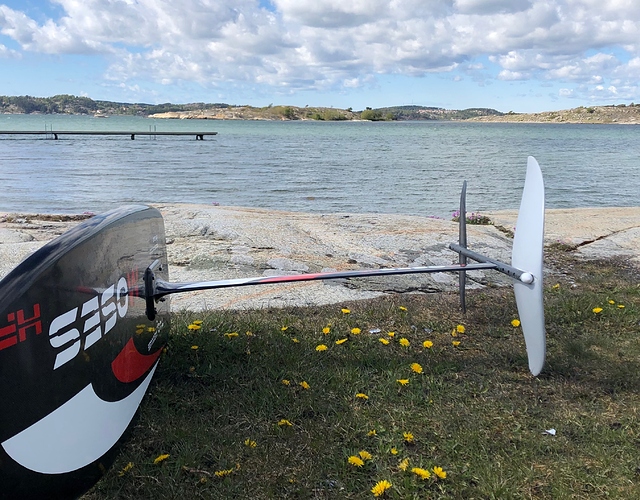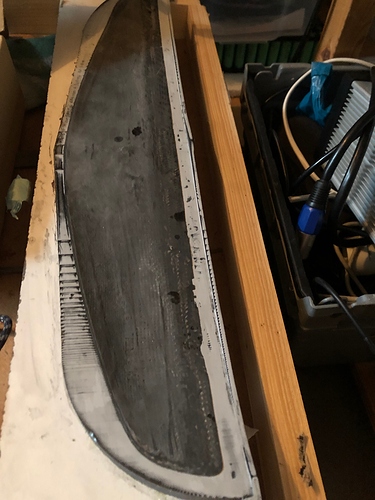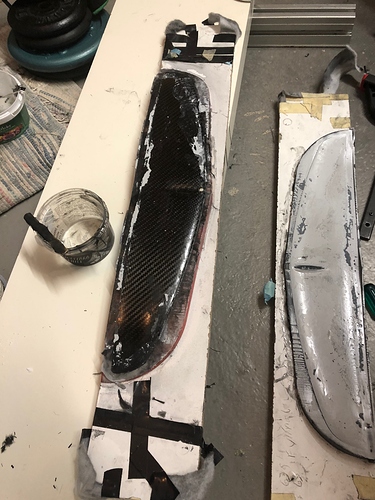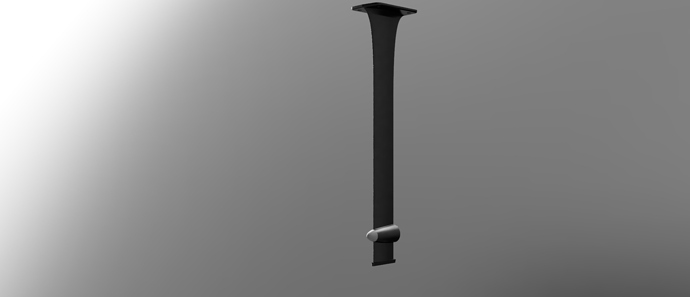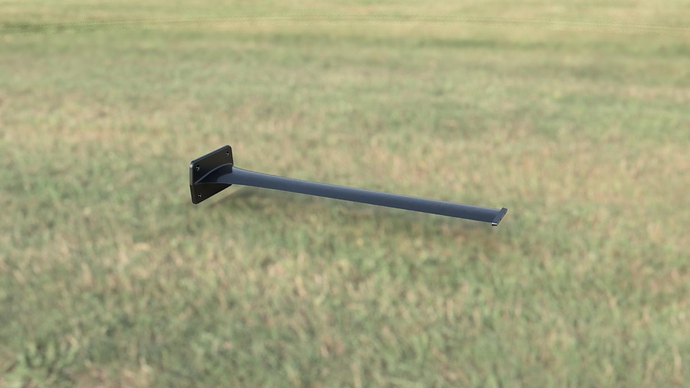With a machined mould you will have great results for sure ! What is the size of your CNC machine ? It must be large to make the mould this way.
That’s a pro looking machine ! lucky you haha I made my board only with a drill :’) but it’s a great looking board I believe. I almost finished it a long time ago (only need painting, holes and sealing, sanding and polishing) but i’m focusing more on the website I want to make…
Quick little update ! I’m waiting to get the clear coat for the wing (also other product to make the front wing) I’m still working on the videos … I’m definitely not as good at making videos as I am at designing, but I think you will like it haha
I finally managed to make a “single piece” front wing mold without all the warping, bending and surface imperfection ! Very happy with the result.The final part will look great I hope ! Here is a picture of the front wing mold (only half part, top and bottom side of the mold)
I finished to polish the rear wing. I have improved the process to make molds, the mold for the front wing was perfect, easy demoulding !
But I tried to apply pressure on the mold in a different way for the front wing, but it failed
 ! With all the heat generated and the pressure, it crushed the mould (only in the middle) … I only saw it after curing so it was too late
! With all the heat generated and the pressure, it crushed the mould (only in the middle) … I only saw it after curing so it was too lateSo I have to do it all over again and wait (I ordered new carbon fiber, etc.) … This time I will apply pressure on the mold with the previous method ! Sorry, I have to make you wait again guys

Wing rly looks beautiful!! Dont give up!
Thanks man ! 

Great work! Any movement on the videos?
I’m still working on it. I just need to edit the videos. I want to show the front wing too so It will take a little bit more time because I have to rebuild a new mould and a new wing. I will try to not smash the mould this time haha !
Greate work!
I´ve also tried with this method for my kite hydrofoil wings. I copied the outline of Moses Onda 633 wings and designed it in F360. It was quite a challenge for me as this was one of my first work in a real CAD program. I did also some analysis in XFLR5 to test the airfoil and area of the wing.
I printed mould of these wings splited in middle and I divided it in multiple parts that I glued together on a flat board. I used small woodparts as distance so I did´nt have to waste so much filament.
The mould was sanded and prepeared it with wax and release agent (PVA). I laminated the front wing with glas and the backwing with carbon as it so thin and its harder to get it stiff. I filled the front wing with hard polyuretan foam and the backwing with epoxy and carbonfiber flock. Then I joined them together using the mould to fixate them. The result is really good and the durability is also good. I´m jumping with it each session and there is no sign of damage. The only problem I had was when I got a little to aggressive in a rellay tight turn and ventilated half of the wing which got the 3 screws to bent and riped out from the wing. But because it is so light it also float and it was not hard to fix with some carbon fiber flock. My weight is 100kg so there was probably a lot of force only on one side of the wing.
First I tried to make my own fuselage with a broken windsurfing carbon bom and some carbon battens from sails. It was hard to get it stiff in the joints between the mast so in the end I converted the wings to fit my Moses Vorace setup with alu-fuselage and carbon mast. I learned how big difference the shape of the FL has. The performance was so much better when I´ll switched to the Moses Vorace FL.
I´m really happy with these wings and specially now when I tested the “real” Moses Onda wings. I´ve used these wings for a year now mostly in waves and freestyle condition and switch over to a Banga foil when it´s time for racing. Those setups are really the opposite to each other.
I´m gonna try these wings for my efoil as it is has early lift and easy to ride. It is much better then my Liquid Force foil that I´m using on my efoil today. So now I´m building a carbon mast with the same method. This mast will have a built in motormount and 3 glasfibertubes for the wires and one carbon tube for the cooling water. I will also try to fit a loadcell to measure the thrust.
Nice work ! With a wing that thick you can have enough stiffness from fiberglass for sure. You can use a thick biaxial cloth, it will give you more stiffness than woven fabric and cost a lot less than carbonfiber. I have also used this method of sanding + primer + pva at the begining, but this method have a lot of demoulding issues that I could not solve.
Yeah I also used biaxial cloth for the backwing but for the front wing I took regular glas in 45 deg patterns. One problem is the primer used on the mold to get good surface. Sometimes it stucks on the laminated wing. And also tricky to find the edge of the mold on the laminated pieces. Specially for the backwing. So this is something that i will try to do better on the next mold that I do.
I use to have this problem, just add a small semicircle at the trailing edge (I would say at least 1-2mm in diameter) with the center of this semicercle at the chord line. Don’t make it too small because at the tip of the wing it will be even smaller and the 3d printer don’t have enough resolution to print it. Then it’s easy to find the edge

I think it will be much easier to 3d print if you turn the part at 90°. You will have more precision especially at the edges. Hope I helped you !
I´m not sure if I understand what you mean. Do you mean to put a mark on the mold?
For the mast where you do not have the anhedral shape like the wings I think it would be easier.
When you design the wing, you should add some curvature at the trailing edge so that you can see it on the mold (and the laminated part).
If we take a cross section of your mold (top side in orange and bottom side in grey) it should look like that (at the trailing edge). You can see that I added a curvature at the trailing edge of the wing (in green). It’s up to you to choose what curvature and thickness you want depending on the 3d printer resolution, how “sharp” you want it to be (for safety and performance), etc.
Nice work on the wing mold Clarin ! what material and process did you use ? it looks like it was CNC machined on a wood board. For a 3d printed mold you can use a 0.25 mm radius on the trailing edge, and you should be able to see it depending on how you 3dprint the mold. It’s the thickness of a layer of carbon fiber or fiberglass (at around 200gr/m²), so I didn’t try to add a groove. It’s only about safety and perfomance I guess.
Hey @visor360 do you think your technique could be used to mold a hollow mast offering strength and plenty of space in the top part to welcome all the needed connectors in a waterproof environment see Wire connectors between Box and Mast - #27 by SoEFoil - Electronics (ESC, remote, batteries) - FOIL.zone ?
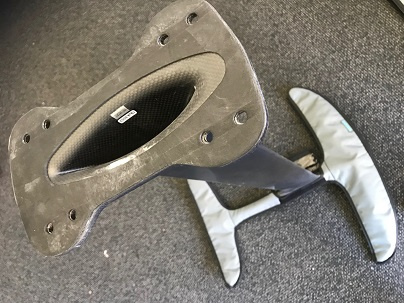
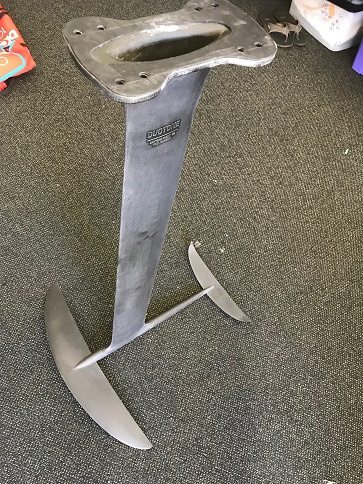
Yes I guess it should be possible, the only way to really know is to try. It could be too weak with this technique if you have only mechanical bond. My mast+fuselage isn’t hollow and the weight is about 2.6 kg. The height from the axis of the motor to the top of the mast is 75 cm (and the total length top to bottom is around 90 cm). You can pass the cables through 3 tubes inside the mast. Why do you want to put the connectors inside the mast ?

